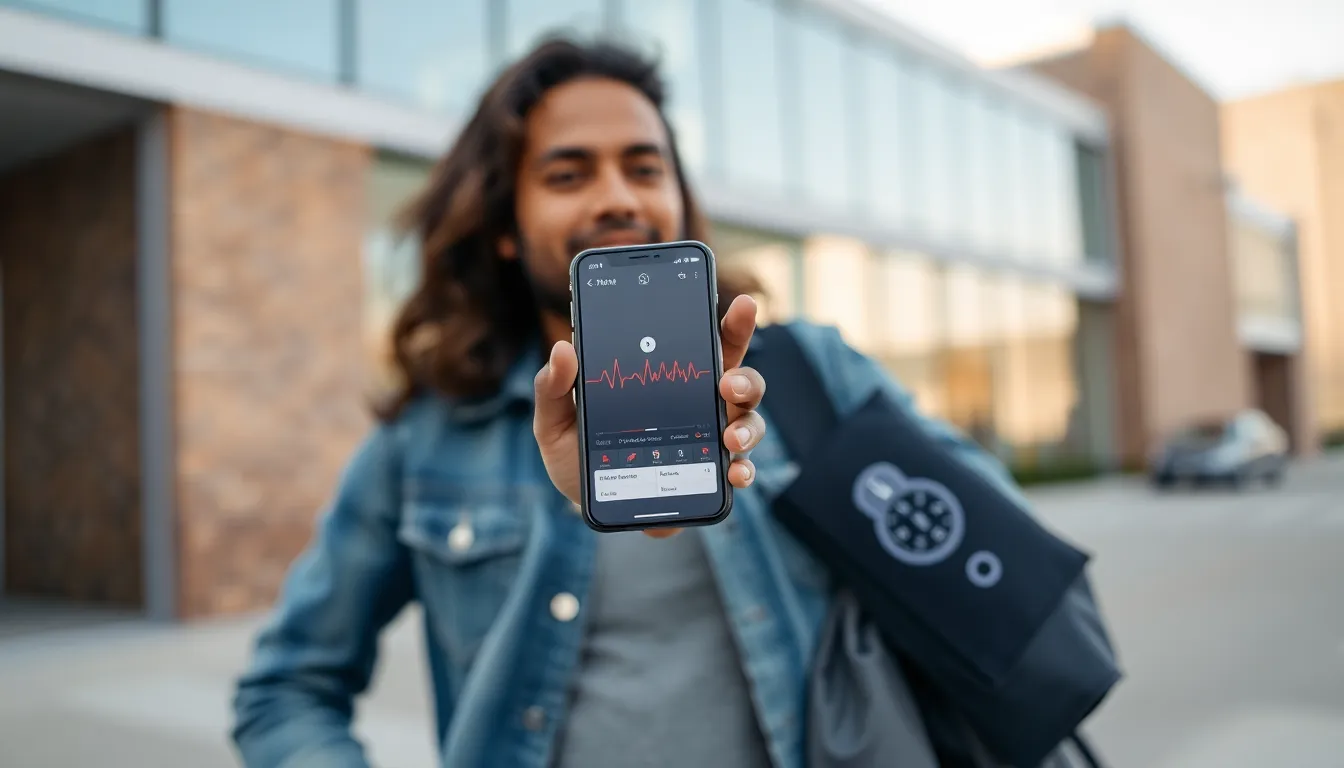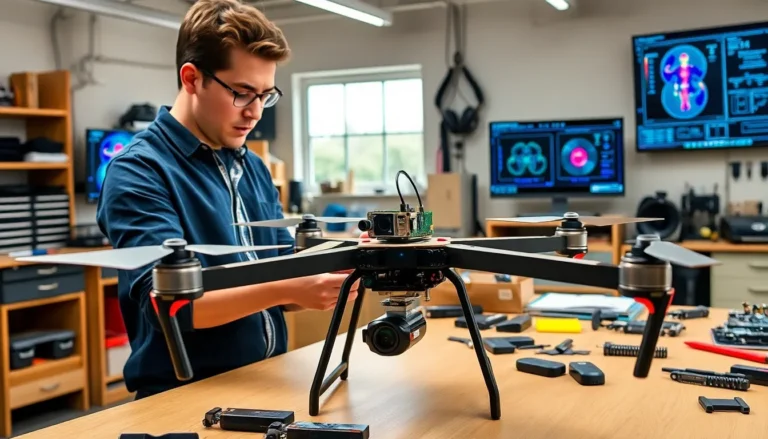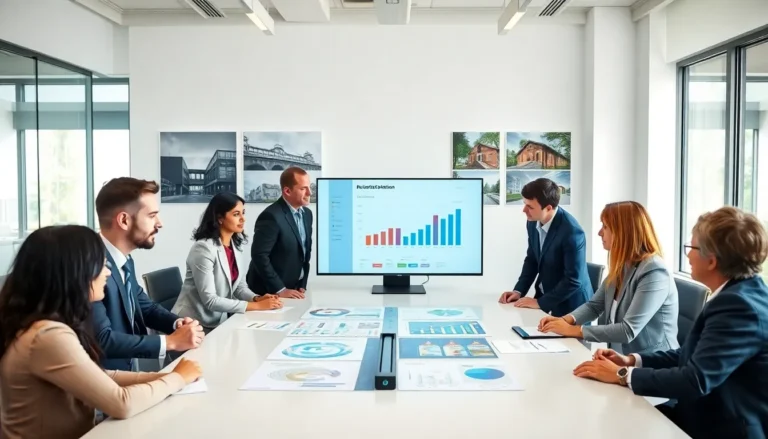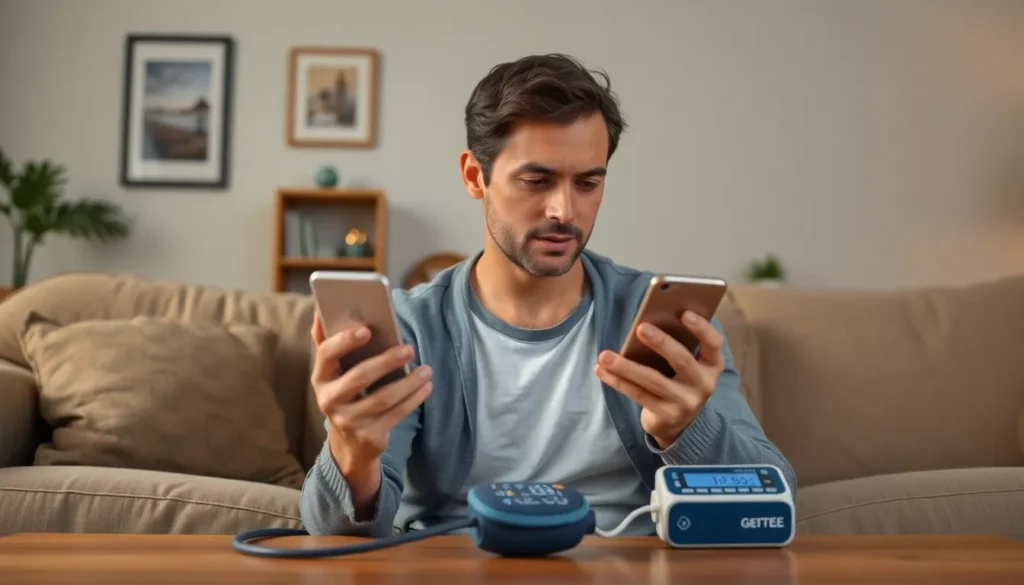Table of Contents
ToggleIn a world where smartphones seem to do everything but cook dinner, the question arises: can an iPhone really take your blood pressure? Picture this: you’re lounging on the couch, scrolling through social media, and suddenly you wonder if that extra slice of pizza has pushed your blood pressure into the stratosphere. Enter the iPhone, your digital sidekick, ready to tackle this modern-day dilemma.
While it might not replace your doctor just yet, advancements in technology have made it possible for your iPhone to help monitor your health. With the right apps and accessories, you could be one tap away from understanding your blood pressure better. So, grab your phone, and let’s dive into the fascinating world of health tech to see if your iPhone can become your new health guru.
Understanding Blood Pressure Measurements
Blood pressure measurements play a crucial role in assessing cardiovascular health. These readings indicate the force of blood against artery walls, providing essential insights into heart function and overall wellness.
What Is Blood Pressure?
Blood pressure consists of two values: systolic and diastolic. Systolic pressure measures the force during heartbeats, while diastolic pressure measures the force when the heart rests between beats. The standard measurement is expressed in millimeters of mercury (mmHg) and is written as systolic over diastolic. For example, a reading of 120/80 mmHg represents normal blood pressure levels.
Importance of Monitoring Blood Pressure
Monitoring blood pressure helps detect potential health issues early. Regular checks can identify hypertension, which may lead to serious complications like heart disease and stroke. Understanding trends in blood pressure readings allows individuals to take proactive steps in managing their health. Consistent tracking can support lifestyle adjustments or medical interventions when necessary, promoting better overall cardiovascular health.
Technology in Health Monitoring

Technology plays a significant role in health monitoring. Innovative advancements enhance the capabilities of personal devices, making health tracking more accessible and efficient.
Advances in Mobile Health Technology
Mobile health technology has transformed healthcare delivery. Smart devices incorporate sensors and software to monitor various health metrics, including blood pressure. For instance, advancements in algorithms enable smartphones to provide better estimations of blood pressure by integrating data from external devices. Mobile applications also connect to Bluetooth-enabled blood pressure cuffs, enhancing user experience. This collaboration between hardware and software results in real-time tracking, allowing users to gain insights into their cardiovascular health quickly.
Role of Smartphones in Health Tracking
Smartphones serve as essential tools in health tracking today. They allow individuals to monitor vital signs, fitness activities, and dietary habits. Users can utilize numerous applications that not only track blood pressure but also offer personalized recommendations. Notifications remind users of scheduled measurements, encouraging consistent monitoring. Furthermore, some apps sync with healthcare providers, enabling seamless sharing of health data. Enhanced connectivity promotes a more proactive approach to health management, allowing users to engage in their health more effectively.
Can an iPhone Take Your Blood Pressure?
An iPhone cannot measure blood pressure directly but can support monitoring blood pressure through compatible accessories and apps. Users can benefit from integrating their smartphones into their health routines.
Features and Functionality
Smartphone features enhance blood pressure monitoring. Bluetooth connectivity pairs with digital blood pressure cuffs, delivering accurate readings to the iPhone. The app interface displays trends over time, helping users visualize their cardiovascular health. Notifications remind users to check their blood pressure regularly. Additional features may include personalized health tips based on readings, encouraging users to maintain a healthy lifestyle. Data integration with healthcare providers allows for streamlined communication and more informed health decisions.
Available Apps for Blood Pressure Monitoring
Numerous apps assist with blood pressure tracking. BP Journal and Heart Habit provide seamless logging and analysis of blood pressure readings. Apple Health serves as a central hub, collecting data from compatible devices and apps for easy access. Instant feedback features in these apps help users interpret their readings effectively. Other popular options include Blood Pressure Monitor and MyTherapy, which enable tracking of medications alongside blood pressure levels. These apps promote user engagement and facilitate consistent health monitoring.
Limitations of Using an iPhone
While utilizing an iPhone for blood pressure monitoring presents opportunities, several limitations must be considered.
Accuracy Concerns
Accuracy remains a significant concern when relying on an iPhone. The smartphone itself lacks built-in sensors for direct blood pressure measurement. Users must employ external devices, such as Bluetooth-enabled blood pressure cuffs, to obtain reliable readings. Variations in cuff sizes or incorrect application can lead to inconsistent results. Furthermore, many third-party apps depend on user input for analysis, potentially introducing human error into recorded data. Consulting a healthcare professional is advisable for validation and to address any discrepancies in readings.
Comparison with Traditional Methods
Traditional blood pressure monitoring delivers results through more controlled environments. Clinics utilize professional-grade sphygmomanometers for precise measurements, ensuring accuracy and reliability. Experienced healthcare providers perform assessments in standardized settings. Home monitoring equipment often offers higher fidelity than smartphone accessories. While smartphones enhance accessibility, they cannot entirely replicate the comprehensive evaluations a specialist provides in clinical settings. Relying solely on an iPhone might lead to underestimating serious health conditions. It remains essential to combine technology with regular medical check-ups for optimal health management.
Using an iPhone for blood pressure monitoring can be a valuable addition to personal health management. While it can’t measure blood pressure directly, the integration of compatible devices and apps empowers users to track their cardiovascular health effectively. This technology enhances accessibility and encourages proactive engagement in health monitoring.
It’s important to remember that while smartphones provide useful tools for tracking trends and receiving reminders, they shouldn’t replace regular consultations with healthcare professionals. Combining technology with traditional medical evaluations ensures a comprehensive approach to health management. By leveraging the capabilities of their devices, individuals can take meaningful steps toward better cardiovascular wellness.







